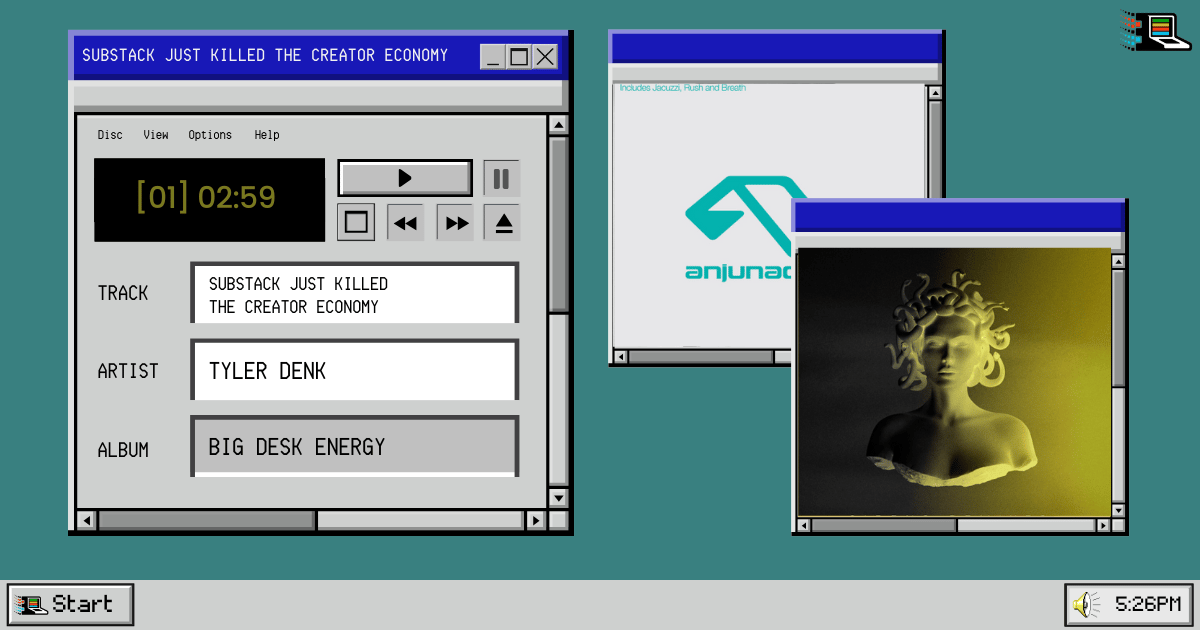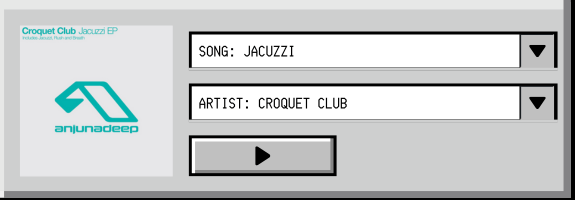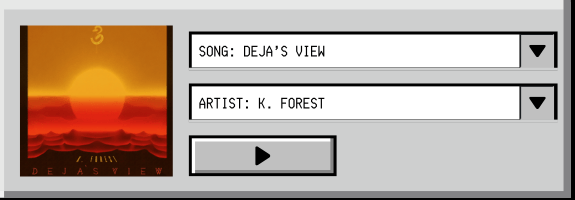Attio is the AI-native CRM for the next era of companies.
Connect your email and calendar, and Attio instantly builds a CRM that matches your business model — with all your companies, contacts, and interactions enriched with actionable insights.
With Attio, AI isn’t just a feature — it’s the foundation. You can do things like:
Instantly prospect and route leads with research agents
Get real-time insights from AI during customer conversations
Build powerful AI automations for your most complex workflows
Fast-growing companies like Granola, Modal, Replicate and more are already experiencing the future of GTM with Attio.
See it for yourself → try Attio Pro for free now.

Substack just fucked over their writers (and readers).
Last week, they announced that all writers would be required to offer Apple’s in-app purchase (IAP) payment option. That means that Apple will be collecting a 30% fee for all subscriptions purchased on Substack via IAP.
But don’t worry, Substack will automatically set prices higher in the iOS app so their writers take home the same amount (i.e., the cost is passed on to the readers).

Oddly enough, this heavy-handed decision was made unilaterally, without giving writers the ability to opt out. Users responded pretty much exactly how you would have expected in the comment section of the announcement.

It hasn’t even been two full months since Substack raised their $100M Series C, and The Chernin Group (TCG) is already deploying their usual playbook of aggressive growth and revenue extraction at the expense of the original product and vision. This is the same TCG that had previously decimated Food52, Hodinkee, and Cameo.
So to recap:
Substack writers just saw their prices inflated 30% on iOS.
Writers now have to wait 45 days to receive payment from Apple.
Writers had absolutely no say in the decision, despite the very real consequences for their business.
The feature cannot be disabled or toggled off.
And while the move is obviously terrible for everyone involved (not named Substack or Apple), focusing on the exorbitant fees is entirely missing the forest for the trees. This move is far more insidious.
Let me explain…
While users interact with Substack, Stripe is actually powering the backend payments.
When writers join the platform, they connect their own Stripe account to Substack. This means that the writer owns the data and billing relationship with their readers, independent of Substack.
When a reader upgrades to pay for a newsletter, under the hood, they become a customer in the writer’s own Stripe account. The writer has full ownership of this transaction and can view, update, and manage billing settings as they please (it’s their customer after all).
Substack charges a 10% fee on all payments simply for calling the Stripe API and transferring funds from the reader to the writer’s Stripe account.

It’s important to note that the writer, at any point, can disconnect their Stripe account from Substack and move it to another platform of their choice.
For example, when writers grow tired of paying Substack a 10% fee for a simple API call, they can simply disconnect their Stripe account and move it to beehiiv (which doesn’t extort revenue from its writers).

With Substack’s latest launch, writers are actually ceding control of the billing relationship to Apple, which now owns and controls the subscription. These transactions, subscriptions, and customers will no longer be accessible in their Stripe account.

Most importantly, that means that if writers choose to leave Substack, they won’t be able to port their paid subscriptions over to another platform like they could previously. This predatory platform lock-in is incredibly dangerous for writers. It strips away data and control, while locking them into the platform.
There’s an unwritten rule in the creator economy around data portability, which allows users to export and import critical data across platforms. Data portability is overwhelmingly good for creators.
As much as I would prefer every beehiiv user to remain on the platform forever, we make it dead simple for them to leave if they so choose. At any time, beehiiv users can export their content, contacts, and even paid subscriptions and move them to any platform of their choice.
Data portability fuels healthy competition. It lets creators choose the platform that serves them best today, and move freely as their needs evolve tomorrow.
With its latest moves, Substack is blatantly trying to destroy writers’ freedom to choose how to build their businesses. By ceding the billing relationship to Apple, Substack is making yet another attempt to lock users into the platform.
As I (successfully) predicted back in December, this is all part of the classic playbook deployed by exploitative take-rate businesses:
Take control of the end user.
Increase platform dependency.
Mark up take rates over time.
Patreon raised its take rate from 5% to 12%, Gumroad went from 4% to 10%, and even Etsy bumped theirs from 3.5% to 6.5%.
Substack has been slowly deploying this playbook in plain sight.
2022: Substack launches an app so your readers become their users. Writers cede control of the audience relationship as Substack sends automated emails on their behalf, pushing readers to download the Substack app. (Take control of the end user).

Emails sent on behalf of writers to download the Substack app
2023: Substack leverages dark patterns to drive new subscribers and take credit for the growth of its writers. (Increase platform dependency).

Dark patterns to trick readers into subscribing to additional publications
2025: Substack severs the billing relationship between its writers and readers so they cannot easily migrate to another platform. (Increase platform dependency).
I’m no investing quant, but if TCG wants to see a return on their investment ($1.1B post-money valuation), you better believe the next step here is to increase Substack’s take rate. And with the inability to migrate your subscriptions elsewhere (as we saw with the latest iOS rollout), what option will writers have other than to accept it?
Not only is this predatory, it’s not even what users want.
Alternatively, you can look to writers like Oliver Darcy, who launched Status last year on beehiiv. Status has its own unique and distinct brand, retains full ownership of its audience, and keeps 100% of the revenue it earns ($1M+ ARR in their first year btw).
The most sophisticated writers and creators will recognize the importance of having ownership of their business and not ceding control to a platform with misaligned incentives.
Publishers have seen this movie a thousand times before: Facebook, Twitter, Google, and now Substack. If creators can’t trust the platforms built on their backs, it’s time to build something better — together.
If you enjoyed this post or know someone who may find it useful, please share it with them and encourage them to subscribe: mail.bigdeskenergy.com/p/substack-just-killed-creator-economy


Credit: me
More companies should have a salt flat location, very underrated.
Think you can generate a better office? Reply with your submissions 📨.

Turn on, tune in, drop out. Click on any of the tracks below to get in a groove — each selected from the full Big Desk Energy playlist.

Some of my favorite content I found on the internet this week…
The Lux Quarterly Letter was the best thing I’ve read this week (Lux Capital)
The insanely valuable company-building principles of Elon Musk (Founders Podcast)
Ryan Duffy shares America’s boldest bets of the summer (Per Aspera)

Chat with DenkBot — my AI clone. It’s trained on everything I’ve ever published and the entire beehiiv knowledge base 🧠.
It’s also trained on my voice, which means you can call it and have full conversations. Give it a try and let me know what you think.

Share this newsletter with your friends, or use it as a pickup line.
👉 Your current referral count: {{ rp_num_referrals }} 👈
Or share your personal link with others: {{rp_refer_url_no_params}}
📥 Want to advertise in Big Desk Energy? Learn More













